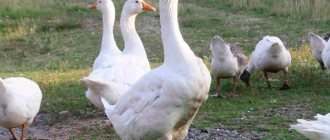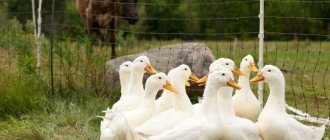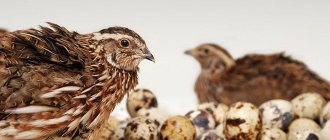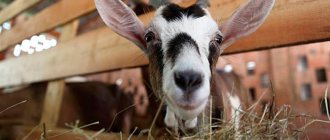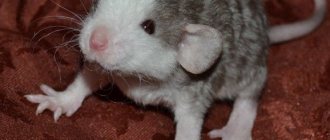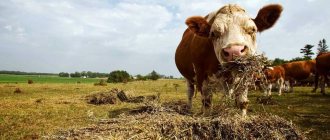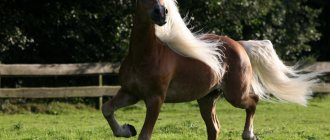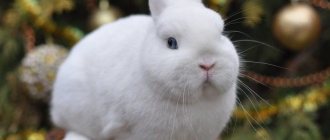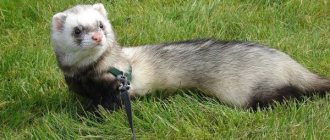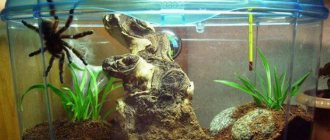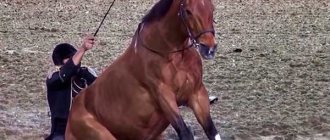Choosing a Geese Breed
When choosing a breed, you need to take into account, first of all, its potential as a source of meat. Because most breeds are used only for this purpose and are of the “Meat-sucking” type. Some of the most popular breeds are Kholmogory, Great Gray, and Lindovsky geese.
The weight of an adult individual of these breeds can reach up to 4-4.5 kg, which is quite enough for slaughter. When choosing a breed, you also need to take into account their grooming preferences and food requirements. Each breed needs a certain feed, which will reveal all the taste qualities of the meat and will contribute to the normal development of the livestock.
If the wrong type of feed is used, the poultry meat will be of average quality and will not be in great demand when sold. That is why it is important to follow all the nuances.
Disease Prevention
Geese have excellent immunity, and in most cases the owner is to blame for diseases of the livestock or individual birds. Compliance with simple hygiene rules and special feeding will protect the flock from possible problems:
- Before introducing new flock into the house, they should be thoroughly cleaned and surfaces disinfected. For disinfection, you can use an available and inexpensive solution of caustic soda (2%). They also use it to treat feeders, drinking bowls, and other equipment.
- Clean the room in a timely manner, avoiding heavy contamination of the litter. If it is already 25% wet, then pathogenic flora will develop in it.
- As for water, geese, of course, love it. Both drinking bowls and troughs for swimming in the summer (if there is no reservoir) should be freely available. However, this bird is extremely susceptible to wet grass, so it is better not to release young animals onto pasture immediately after rain or if there is heavy dew on the plants, as this can lead to bloating or enteritis.
- To prevent bacterial intestinal infections, goslings are given special nutrition:
- on the 11-12th day of the chick’s life, kormogrisin K-5 is mixed into the feed at the rate of 4 g of the drug per 10 kg of feed weight;
- on days 13-14 give Biovit-120 - 0.41 g/kg live weight;
- on days 15-20 – paraform (2 g per 10 kg of feed).
Preparing for summer maintenance
Let's look at a brief guide to keeping geese for beginners.
First of all, you need to prepare the room in which the geese will sleep. In fact, if you have experience in raising chickens, it can be applied to arranging housing for geese, because the principles are very similar.
- The sleeping area should be warm and dry enough for the birds to feel comfortable in it.
- Ideally, use a small barn where you can equip several floors with stairs. Geese will independently find roosts for the night.
To provide for the geese for the summer period, it is not at all necessary to erect and equip permanent buildings, because the geese will only spend the night in them. They spend the whole day outside, where they are quite comfortable.
Gusyatnik
When keeping poultry all year round, you need a reliable gooseneck that will provide good protection in cold weather from frost, as well as from various predators.
Construction of a gooseneck
The area of the goose barn depends on the number of birds and the conditions under which they are kept. Typically, a room for geese is built at the rate of 1 sq. m on the head. With constant grazing, which can be organized in the southern regions, compaction can be achieved to 2.5 individuals per 1 square meter. m.
The best place for a gosling is on an elevated place near a lake or during grazing. If this is not available, a walking aviary made of metal mesh is made at the poultry house. The building is built on a foundation made of crushed stone and concrete. Walls can be made of brick, timber, concrete blocks. They must be insulated.
At least 2 openings are made for windows and they must face south to ensure the longest possible daylight hours. Make 2 manholes for geese measuring 0.5x0.5 m.
The floor is raised by 20 cm and sloped for more convenient removal of waste. For ease of cleaning and additional warmth, the floor must be covered with bedding, which may consist of straw, sawdust, sand, or peat. The roof is made simple, with one or two slopes, but it is best to make it with an attic for storing hay. It must be insulated and covered with roofing materials (for example, roofing felt).
Important! Crowding in the poultry house causes delayed sexual development in goslings. In addition, darkness combined with poor lighting leads to pecking in birds.
Arrangement of a gooseneck
After completing the construction of the gooseneck, it is important to properly equip it.
Bird feeders and drinkers are chosen so that they can be easily maintained. For dry food, containers made of wood are installed, and metal is well suited for wet mash. There should be 20 cm of working surface of the drinking bowl or feeder per individual. To save space, food containers are hung at a height of about 0.5 m.
It is also necessary to set aside an area for ash baths. They are made of wood and filled with a mixture of ash and fine clay in equal parts.
Depending on the number of geese, nests are installed, taking into account that there is 1 nest for 2 females. The nests are placed in a quiet, shaded area of the room so as not to disturb the birds while the goslings are hatching. It is imperative to arrange separate compartments for adult birds and chicks.
You should also provide lighting and heating in the poultry house, and take care of ventilation.
What to feed geese
Keeping geese in the country is quite a complex process, especially if the area is fenced on all sides. In such conditions, walking becomes almost impossible, especially if the area itself is small.
In this case, it is necessary to make feeders with a ready-made diet, which will include feed, grain and other food necessary for the normal development of the bird.
- If the size of the plot allows, it is best to use pasture.
- It may be small in size; it is desirable that it be covered with dense perennial grass.
Geese feel great on natural food, but it is advisable to feed them, because soon the grass will simply be eaten away and they will become malnourished, so feeding is important.
Those new to poultry keeping can watch this short, informative video of geese conditions. There it will be shown which buildings are recommended to be erected for the summer period, when geese spend the whole day outside. Some tips will also be given on how to make care easier and more effective.
Feeding and raising young animals
Unlike chickens, turkey poults and other young birds, goslings are the least demanding when breeding. Since, already at three weeks of age, they do not need heating at all.
For the first 10-14 days, it is advisable to raise small goslings in brooders and maintain the following air temperature:
- Age 1-5 days – 28-24°C.
- Age 6-10 days – 24-22°C.
- Age 11-20 days – 22-18°C.
After 3 weeks of age, in warm and sunny weather, the goslings can be released outside. This applies to early broods, and later (summer) broods of goslings feel great on green grass from the first days of life.
The basis of the diet of goslings is oats with a small admixture of barley, corn, cakes and meals, as well as animal feed. Naturally, such food is given in ground form, adding boiled potatoes, eggs, cottage cheese, fish and grated carrots. That is, there are no strict rules in feeding goslings, the only thing you need to be wary of is overfeeding with food of animal origin.
Animal feed (fish and meat and bone meal, fish, meat, eggs, cottage cheese, etc.) should make up no more than 15% of the total diet.
Already on the 2-3rd day, goslings can eat young, fresh greens, but where can they get them in March and early April?
I solved this problem as follows. Back in the fall, I selected a small bed and sowed it with leeks, installing wire arches on it. And in the spring, even before the snow melted, I put a film over the bed with onions and at the beginning of April, young onions 10-15 cm long were already sprouting there. Green onions, as well as grass, can be given to the goslings as much as they can.
Approximate composition of the feed mixture for goslings aged 1-21 days:
- Oats – 70%.
- Barley – 10%.
- Corn – 10%.
- Cake and meal – 5%.
- Animal feed and premixes – 5%.
Advice. If you decide to buy small goslings, then first of all pay attention to their appearance. A healthy gosling is somewhat reminiscent of a small ball of fluff. With smooth, non-sticky down, without any discharge in the cloaca area and firmly standing on its feet.
Room for geese
Breeding geese only in the warm season does not require a warm, permanent poultry house. All that is needed is a room of appropriate size (5 geese per 1 m² of poultry house area) that protects the birds from rain, wind and predators. And of course, there should be a well-fenced paddock available.
But we will consider the year-round maintenance of geese in more detail.
Try to give the geese a separate room. For example, being with chickens, they create high humidity in the poultry house (due to droppings and constant bathing in drinking bowls). And since chickens need long daylight hours (for increased egg production), geese can hatch prematurely. If they hatch in November or December, then the next egg-laying will begin only six months later, i.e. you will no longer hatch early goslings. Secondly, geese do not need to be provided with the same comfortable conditions as chickens or turkeys. They tolerate low temperatures well (-10 degrees - which is quite acceptable) and, most importantly, at sub-zero air temperatures, the room for geese will always be dry.
One more thing. If the walls of the goose house are plastered from the inside or caulked, then be sure to line them at a level of 1 m from the floor, with any available material. Otherwise, the bird will pull out all the insulation and peel off all the plaster. I didn’t know this, and over the winter my geese tore off almost all the plaster, wherever they could get it. At the same time, with a joyful look and cackling, they threw pieces of it into drinking bowls and chased it there until it completely dissolved, turning clean water into a muddy slurry.
Preparing for winter maintenance
When considering how geese are kept in winter, you need to understand that these are heat-loving birds. Most breeds are migratory, and with the onset of cold weather they fly to warmer climes to wait out the winter.
Considering that when kept at home, birds are deprived of the opportunity to fly, it is necessary to provide the proper conditions so that they can grow and develop systematically even in winter.
- The first thing you need to pay attention to when arranging a winter building for geese is the resistance of the materials to moisture.
- It is recommended to build from materials coated with a special impregnation that will protect the wood from moisture.
- As a rule, metal elements are used as a frame, because this makes the construction a little easier.
The exterior of the building must be additionally sheathed to prevent cold air, snow and moisture from entering the premises. It is also insulated from the inside; special attention should be paid to this aspect in those regions where the temperature in winter drops below 20 degrees.
Keeping migratory geese is a fairly simple task if you know and follow all the recommendations exactly.
- The main task of keeping geese in winter is to obtain eggs, and, quite possibly, offspring.
- Therefore, the building needs to be built spacious.
- It should comfortably accommodate the entire herd and have a reserve for new additions.
- Moreover, the reserve must be laid to the maximum, counting on the maximum increase in small goslings.
- In any case, the fertility of each individual bird will not be at its maximum, this will ultimately allow for a certain amount of free space.
- Don’t also forget about the corner, which should contain all the equipment for caring for birds in the winter.
- During this time, they spend 24 hours a day indoors, so it is very important to maintain hygiene and cleanliness inside.
Regular cell cleansing will help prevent the occurrence of viral and bacterial diseases.
Hatching egg
If you already keep a family pair of geese raised from purchased goslings, and want to breed them yourself, then you need to prepare the bird for the incubation period. Under good housing conditions, geese begin to lay eggs in February-March. And the main stimulator of oviposition is a long daylight hours of 12-14 hours. That is, the egg-laying of geese can be controlled and regulated, adjusting it to the optimal time of year for you.
For example, you want to hatch goslings in early April. To do this, the geese are artificially increased daylight hours to 14 hours in February, and by the beginning of March they begin to lay eggs intensively. To prevent the egg from becoming contaminated with droppings and the birds laying eggs in a strictly defined place, in secluded and darkened corners of the poultry house, nest boxes are installed. Up to 90% of all geese lay eggs in the first half of the day, and here you need to calculate this period and collect eggs from the nests in time. This is necessary primarily in order to avoid not only contamination of the eggs, but also their hypothermia.
Feeding geese to obtain high-quality hatching eggs
The next important point in obtaining high-quality hatching eggs for breeding is feeding the geese. Below, I will give a detailed table of feed supply, but now we are not talking about that. The fact is that it is important to maintain the golden mean, i.e. the bird should receive the maximum amount of nutrients, including vitamins, macro and microelements, and at the same time, the geese should not become fat. If geese have an excess supply of fat, then almost all the eggs they lay will be unfertilized. To obtain a high-quality hatching egg, geese need to be switched to the following diet:
- Oats – 80%.
- Cake, meal and peas – 15%.
- Fish and meat and bone meal, including various mineral and vitamin supplements (premixes) – 5%.
Advice. During the pre-incubation period, try to completely exclude barley from the geese’s diet. Barley makes the shell of goose eggs so strong that during the hatching period it is very difficult for small goslings to break through it.
As I already said, you need to collect the hatching egg every day and store it in a dark, cool place, at a temperature of 12-16 degrees Celsius. However, there are situations when you need to collect 30-40 eggs over a long period of time. And naturally, the first eggs collected completely lose their incubation properties. To prevent this from happening, the egg should be heated in the incubator every day at a temperature of 37-39 degrees. This is called the mother hen effect.
Let's take, for example, a hen that hatched 18-20 chicks in a secluded place, and she hatched them only from her eggs. And the chick hatch rate reached 100%. And then a natural question arises - how did she do it? After all, the time interval between the first and last egg laid is quite long. The explanation is quite simple: each time the chicken was going to lay a new egg, it warmed up the entire egg laying, extending the shelf life of the hatching eggs.
Before placing an egg in an incubator or under a hen, it is checked for cracks and obvious damage. For this purpose it is better to use an ovoscope. Eggs that are round, flattened or too elongated are also not suitable for hatching goslings.
Hatching goslings in an incubator
For artificial breeding of goslings, any incubator is suitable. However, hatching them in an incubator is not as easy as it seems. If chickens need to lower air humidity in the second week of incubation, then goslings need to increase it.
This is done using a room polarizer, which is used to spray the egg twice a day, starting from the 15th day of incubation. Well, otherwise, the whole process of incubating goose eggs is no different from chicken or quail eggs.
- In the first week of incubation, we maintain the air temperature within 38.5-39 degrees.
- In the second week, we reduce the temperature to 38.5-38 degrees.
- Third week - 38 degrees.
- The last seven days - 37.5-38C°.
In almost every goose hatch, there are goslings that cannot get out of the shell on their own. If you notice such a gosling, do not rush to release it immediately. First, illuminate the egg with the gosling using an ovoscope and determine whether the blood vessels connecting its umbilical cord to the shell have separated. If they separate, then feel free to pull it out and be sure to cauterize the umbilical cord with iodine. If you do this ahead of time, the gosling will inevitably die from excessive bleeding. For the first few days (until the umbilical cords are tightened), keep these goslings in a separate box.
Hatching goslings under the hen
Breeding and raising goslings under a hen is much easier than in an incubator. In this case, the withdrawal can reach 100%. But there are some nuances here too. Not every goose has a pronounced brooding instinct. If you want to raise goslings only under the goose, then purchase the following breeds of geese: Kholmogory, large gray, Toulouse and Italian white geese .
It is the geese of these breeds that are most prone to incubation. But constantly collecting hatching eggs greatly reduces the chances that your geese will lay eggs. Therefore, the real egg must be replaced with a dummy, which is made from any available material. For example, I made dummies of eggs from gypsum dry plaster and placed 5-6 eggs in a nest. And when he noticed that one of the geese began to tear out the fluff and line the nest with it, while remaining overnight in it, he placed real eggs under it.
This must be done at night, carefully and in complete darkness. Usually, 9-11 eggs are laid under each goose. When the time for hatching comes (usually on days 27-29), the hatched goslings are taken from under the hen, the nest is cleared of shells and the last gosling is awaited to hatch.
If on the 30-31st day the goose continues to sit on the nest, but the remaining eggs do not show signs of life (pecking, squeaking inside the eggs, light tapping), then the hatching of the goslings under the hen can be considered complete and the already dried and strengthened goslings can be allowed in to her. Also, goslings bred in an incubator should be allowed near the goose, as she can grow them up to 20-25 pieces. In the future, it is better to separate the goose with the brood from the main herd for 2-3 weeks, and until the young animals fledge, do not release them into the pond.
Geese breeding
In order to have healthy offspring, you need to carefully select ganders. They must have clear characteristics of the breed, be free from chronic diseases, and have healthy, thick plumage.
If the breed is “Meat”, the gander should have pronounced meat shapes. Thanks to gander genetics, the offspring will be healthy and large.
When considering the question of how Linda geese are kept, it is worth understanding that this breed is significantly different. She needs to equip a permanent poultry house with drinkers and feed bowls.
- The optimal ratio of males to females should be around 1:3, but variations are quite possible; you need to take into account the characteristics of the breed that you plan to breed.
- Egg laying occurs at the end of February, however, if additional lighting is provided, this process can be adjusted by speeding up or slightly postponing it to a more convenient time for collecting eggs.
In order to increase the intensity of daylight hours in December, they begin to increase artificially so that the females receive more warmth. This has a positive effect on the intensity of egg laying.
Necessary equipment
The arrangement of the poultry house does not end with just litter. Feeders, drinking bowls, and nests should be placed. It would be nice if there was an extension nearby where you could store cleaning tools.
Dry food can be poured into boxes made of wood or plywood, but for wet food, it is better to purchase metal containers.
The size of the feeders must be impressive, otherwise the geese will crowd around them and not let each other eat.
The water in drinking bowls should be changed regularly; if it is contaminated, various infections and viruses may appear. Therefore, care must be constant. A variety of containers can be used as drinking bowls, ranging from a regular trough to cut pipes.
Geese are very active near water, so to prevent the bedding from getting wet, drinkers are placed on special trays. In cold frosty times, drinkers are filled with hot water to prevent freezing.
Nests are pre-prepared for geese. This needs to be done a month and a half before egg laying begins. During this period, the goose adapts to the new place and remembers the location. There should be no more than three individuals per nest.
To build a nest at home, it is fashionable to use, for example, a basket or a wooden (plywood) box. A wicker tray is placed inside the resulting nest. It will make it easier to remove the eggs.
Photos of the best breeds of geese
Common diseases
Geese are susceptible to diseases that affect waterfowl. The most common diseases are the following:
- Coccidiosis . This disease often affects young goslings. It manifests itself in the form of diarrhea, which causes dehydration and exhaustion of the body. Renal coccidiosis affects the kidney canals - in this case, affected individuals lose activity and appetite, sit with a ruffled appearance, which also leads to severe exhaustion. Coccidiostats (Baycox) and sulfonamide drugs are used for treatment.
- Pasteurellosis . This dangerous disease quickly affects the bird and often leads to its death. In this case, the goose barn is quarantined and all sick birds are slaughtered. Treatment is carried out with antibiotics and sulfonamides.
- Paratyphoid . In adults, the disease can pass without any symptoms, but goslings do not tolerate paratyphoid easily. Severe diarrhea, conjunctivitis, exhaustion, breathing problems appear, and the chicks begin to limp. Death occurs within 3-4 days. Paratyphoid fever is treated with antibiotics such as tetracycline and nitrofuran, but treatment does not bring results in all cases.
- Helminthiases . Geese can become infected with trematodes, cestodes, and nematodes. They are treated with anthelmintics and Ivermectin.
At low temperatures and drafts, birds can become ill with viral diseases that cause inflammation in the frontal sinuses and sinusitis. Antibiotics are used for treatment.
Non-contagious diseases of geese include hypovitaminosis, which occurs due to a lack of essential vitamins and minerals.
Walking conditions
Geese require regular walking.
Flood meadows, stubble, areas where clover, legumes, sorrel, nettles, dandelions, and cereals grow are suitable for grazing. The main thing is that the walking area is as spacious as possible, so that the birds have the opportunity to move more and process pasture.
Water
For breeding geese, the presence of a reservoir is not a prerequisite. Of course, a good, clean reservoir with rich vegetation will be a definite plus, but rapid weight gain, the number of eggs, and health depend, first of all, on the conditions of detention. If you provide the birds with good nutrition and proper care, the birds will easily survive the lack of a reservoir.
When arranging a bathhouse for geese in the yard, the following conditions must be observed:
- Possibility of water renewal. Non-renewable water blooms and is quickly polluted by birds.
- Arrangement of a gentle slope. It will be easier for adult birds to descend into the water, and for young birds to climb back onto land.
Large basins and troughs are suitable for bathing areas.
Incubation of eggs at home
It is quite difficult to hatch chicks in an incubator due to the large size of the eggs. It is optimal if about 70% of them survive.
Expert opinion
Novoselova Sofya Ivanovna
Farmer. 20 years of experience.
Ask a Question
Eggs that are laid no more than 10 days ago are suitable for hatching. It is important that their shape is perfect. The incubation material cannot be washed, but can be disinfected in a weak solution of potassium permanganate.
Incubation period is 28-33 days depending on the breed. Hatching can begin on the 27th day of placing incubation material in the incubator.
Incubation mode
| Index | 1-8 days | 9-13 days | 14-27 days | 28-33 days |
| Temperature (degrees, °C) | 37,8 | 37,8 | 37,5 | 37,3 |
| Relative Humidity (%) | 60-70 | 55-60 | 55-60 | 80-90 |
| Auto-rotate (6-8 times a day) | + | + | + | Off |
| Spraying | – | – | 2 times a day | – |
| Opening vents, cooling (duration 10 minutes) | – | – | 2 times a day | – |
Information for beginner poultry farmers
As a rule, geese are unpretentious, and raising them does not require large investments. An equipped goose coop is required for birds, but it is not always necessary to create a special microclimate in it - only if you want to produce offspring.
Geese have strong immunity and rarely get sick. Feeding them will not be expensive either. Compound feed is needed only at the initial stage. Grown-up birds feed on grain feed and grass, including weeds.
However, for proper development and rapid weight gain, a pasture is required where the birds could graze all day, effectively processing pasture, as well as a body of water - natural or artificial. This can create certain difficulties during breeding.
Geese are a suitable poultry even for novice poultry keepers. With intensive fattening, they quickly gain weight within the first three months, and after six months the weight of meat breeds reaches the possible maximum indicators - 5-6 kg. At this time, the birds are already ready for slaughter; it is not advisable to keep them longer, since subsequently their meat will become tougher, lose juiciness, and the carcass will take on an unattractive appearance due to the “stumps” of the feathers.
Natural hatching of chicks
If geese are kept in a poultry house for the purpose of further breeding, it is necessary to arrange nests in the optimal quantity.
Nests can be made from plywood or wicker baskets with bedding changed frequently. Those geese, as a rule, have one nest, located in an insulated place away from direct sunlight, preferably in a separate room from the rest of the birds. Optimal dimensions of the nest:
- height - about half a meter;
- length – 65 cm;
- width – 40-50 cm;
- threshold height – no more than 10 cm.
The average incubation period for eggs is about a month. Usually the chick hatches on the 28th day.
The most common egg breeds of geese
Read
Decorative geese. The two most beautiful breeds
More details
